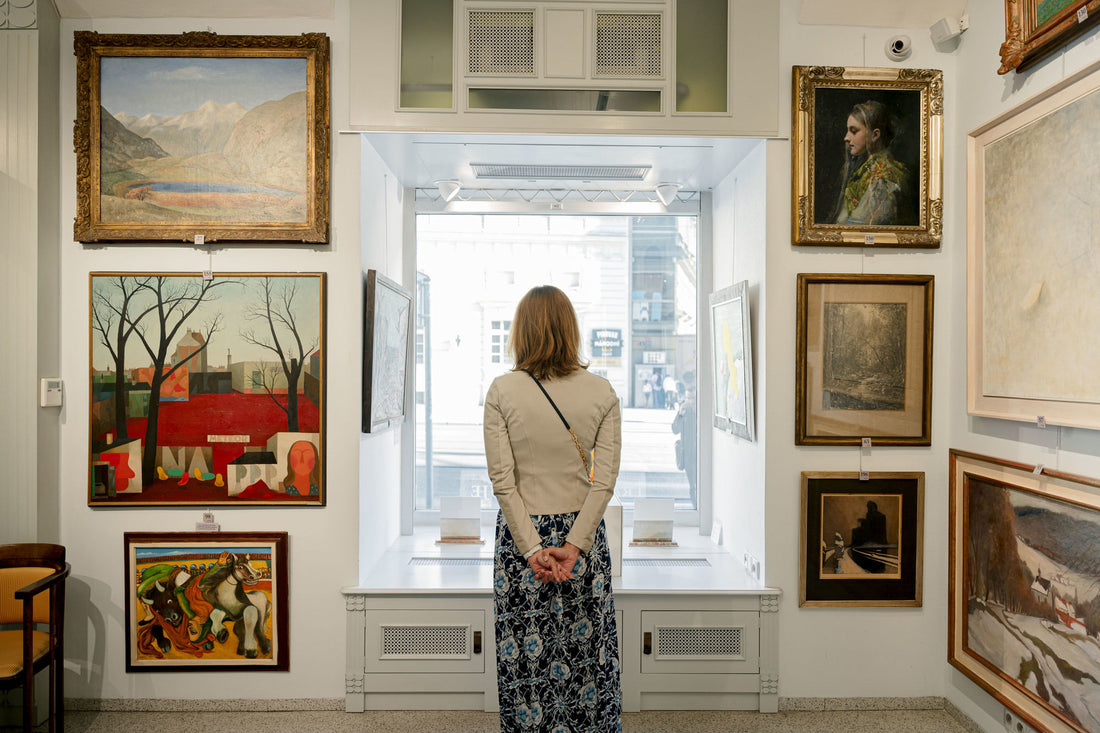
Size guide for Wall art & Canvas
Share
Choosing the right size for wall art or canvas is essential to create a balanced and visually appealing space. The size of your artwork can significantly impact the overall aesthetic, whether you're decorating a small nook or a large wall. This guide will help you select the ideal size for your needs.
General Guidelines for Wall Art Sizes
-
Scale to Wall Size:
-
The artwork should take up about 60-75% of the wall space if hung on its own.
-
For a wall with furniture, the piece should be 2/3 to 3/4 the width of the furniture.
-
-
Consider Viewing Distance:
-
Larger pieces are better for expansive spaces where you view them from afar.
-
Smaller pieces work well in intimate spaces or grouped together in a gallery wall.
-
-
Proportion and Balance:
-
Avoid choosing artwork that’s too small; it can feel lost on a large wall.
-
Oversized pieces can dominate a room, so ensure the scale fits the space.
-
Wall Art and Canvas Size Categories
Small (Under 18 inches)
-
Best For: Compact spaces like hallways, bathrooms, or as part of a gallery wall.
-
Examples: Mini canvases, small photographs, or hand-drawn sketches.
-
Placement Tips: Pair with other small pieces for a cohesive look or use them to accentuate a smaller area.
Medium (18-36 inches)
-
Best For: Bedrooms, kitchens, and smaller living room walls.
-
Examples: Abstract pieces, family portraits, or travel photography.
-
Placement Tips: Center above furniture such as a dresser, desk, or small sofa.
Large (36-60 inches)
-
Best For: Living rooms, dining rooms, or spacious bedrooms.
-
Examples: Bold statement pieces, panoramic photography, or large canvas prints.
-
Placement Tips: Position above a sofa or bed. Maintain a 6-12 inch gap between the artwork and the top of the furniture.
Oversized (60+ inches)
-
Best For: Large walls in open-plan spaces, entryways, or offices.
-
Examples: Multi-panel canvases, oversized abstract art, or murals.
-
Placement Tips: Use as a focal point. Leave sufficient wall space around the artwork for balance.
Sizing by Wall and Furniture Type
Above Furniture:
-
The width of the art should be about 2/3 to 3/4 the width of the furniture below it.
-
Leave 6-12 inches of space between the top of the furniture and the bottom of the artwork.
Full Wall Art:
-
For large, empty walls, choose oversized pieces or group multiple artworks to fill the space.
-
Leave 4-8 inches between pieces in a gallery wall for cohesion.
Gallery Walls:
-
Combine small to medium pieces for a curated look.
-
Plan the layout on the floor first to ensure spacing and balance.
Narrow Walls:
-
Use vertically oriented art to draw the eye upward.
-
Stack small or medium pieces for a dramatic effect.
High Ceilings:
-
Opt for tall, vertical pieces or stacked arrangements.
-
Oversized art works well to fill the vertical space.
Placement Tips
-
Eye Level:
-
Hang the center of the artwork at approximately 57-60 inches from the floor, which is the average eye level.
-
-
Spacing:
-
For multiple pieces, leave 2-4 inches between smaller works and 4-8 inches for larger ones.
-
-
Frame and Matting:
-
Add matting or wide frames for small art to give it more presence on the wall.
-
-
Lighting:
-
Use accent lighting to highlight the artwork, especially in dimly lit areas.
-
Conclusion
Selecting the right size for wall art or canvas is a critical aspect of interior design. By understanding your wall dimensions, furniture placement, and viewing distance, you can create a harmonious and impactful display. Whether you choose a single statement piece or an artful gallery wall, the right size ensures your artwork enhances the space beautifully.
